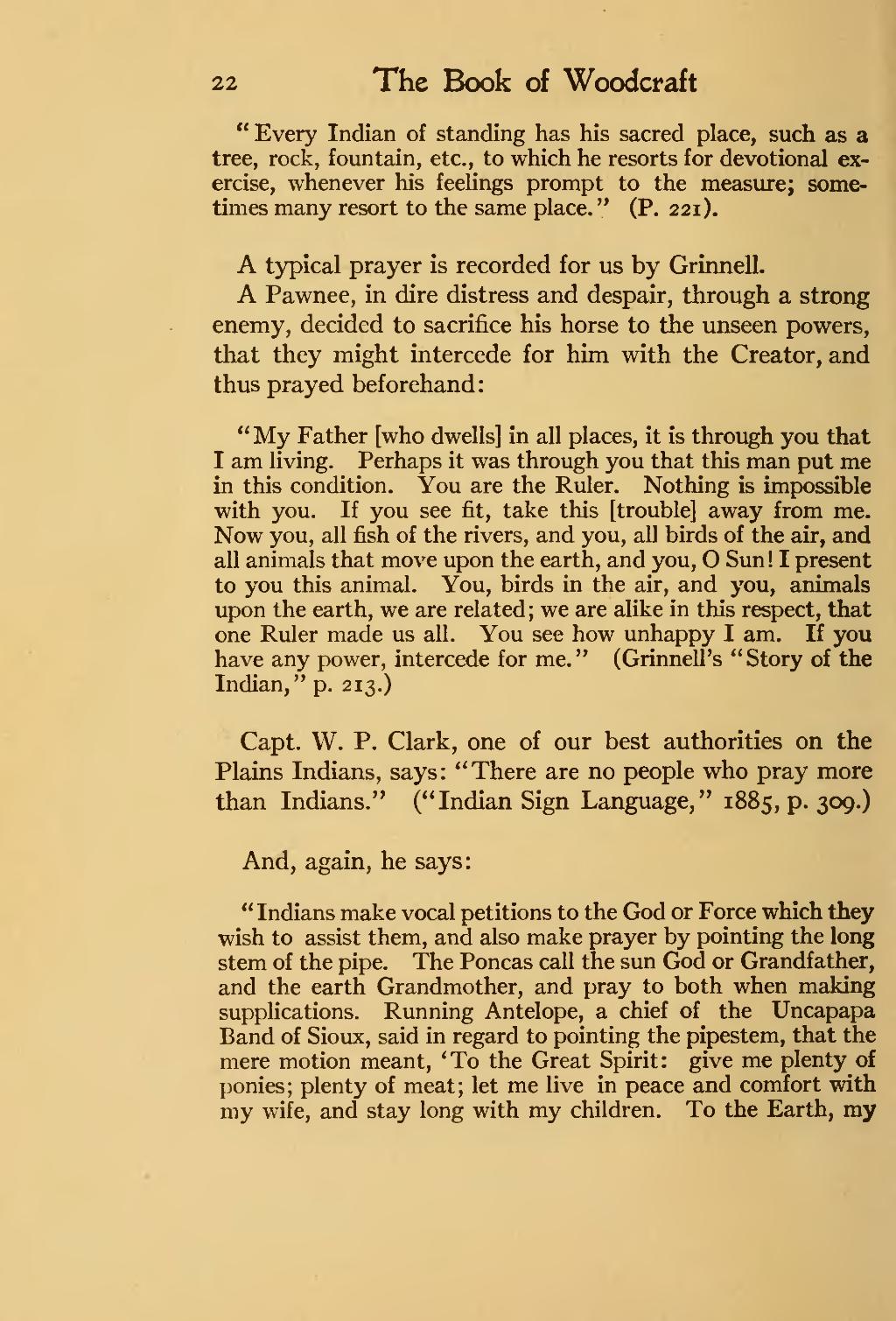Pokračování textu ze strany 53
“Every Indian of standing has his sacred place, such as a tree, rock, fountain, etc., to which he resorts for devotional exercise, whenever his feelings prompt to the measure; sometimes many resort to the same place.” (P. 221).
A typical prayer is recorded for us by Grinnell.
A Pawnee, in dire distress and despair, through a strong enemy, decided to sacrifice his horse to the unseen powers, that they might intercede for him with the Creator, and thus prayed beforehand :
“My Father [who dwells] in all places, it is through you that I am living. Perhaps it was through you that this man put me in this condition. You are the Ruler. Nothing is impossible with you. If you see fit, take this [trouble] away from me. Now you, all fish of the rivers, and you, all birds of the air, and all animals that move upon the earth, and you, O Sun! I present to you this animal. You, birds in the air, and you, animals upon the earth, we are related; we are alike in this respect, that one Ruler made us all. You see how unhappy I am. If you have any power, intercede for me.” (Grinnell's “Story of the Indian,” p. 213.)
Capt. W. P. Clark, one of our best authorities on the Plains Indians, says: “There are no people who pray more than Indians.” (“Indian Sign Language,” 1885, p. 309.)
And, again, he says:
“Indians make vocal petitions to the God or Force which they wish to assist them, and also make prayer by pointing the long stem of the pipe. The Poncas call the sun God or Grandfather, and the earth Grandmother, and pray to both when making supplications. Running Antelope, a chief of the Uncapapa Band of Sioux, said in regard to pointing the pipestem, that the mere motion meant, ‘To the Great Spirit: give me plenty of ponies; plenty of meat; let me live in peace and comfort with my wife, and stay long with my children. To the Earth, my
..text pokračuje
